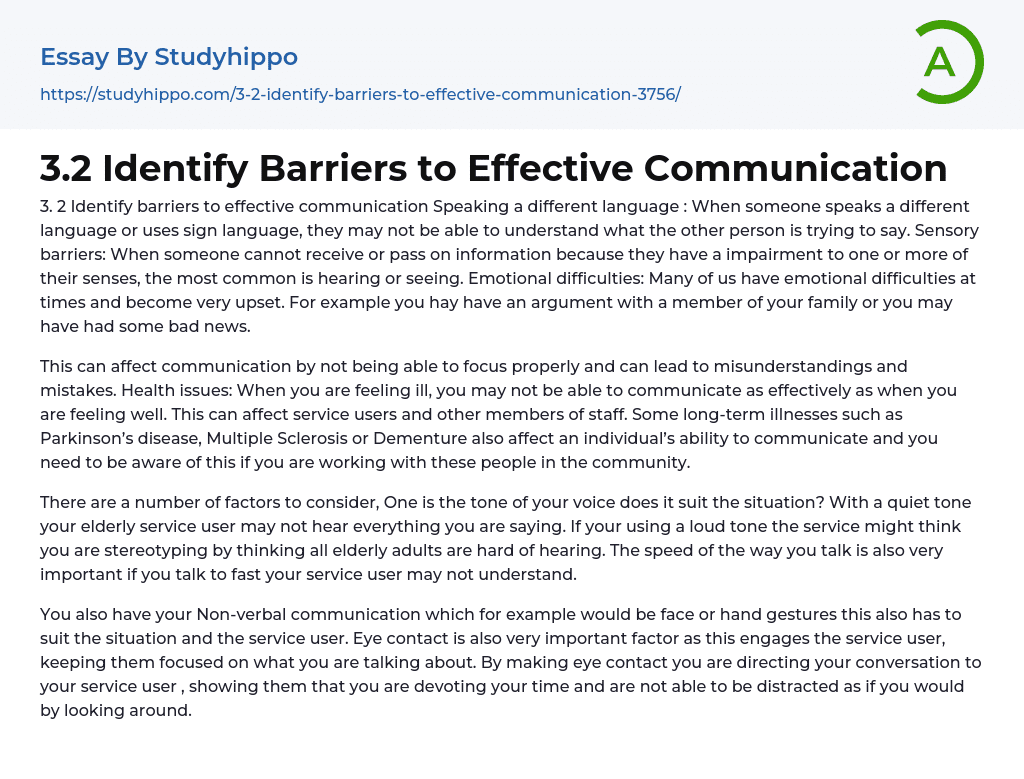3. 2 Identify barriers to effective communication Speaking a different language : When someone speaks a different language or uses sign language, they may not be able to understand what the other person is trying to say. Sensory barriers: When someone cannot receive or pass on information because they have a impairment to one or more of their senses, the most common is hearing or seeing. Emotional difficulties: Many of us have emotional difficulties at times and become very upset. For example you hay have an argument with a member of your family or you may have had some bad news.
This can affect communication by not being able to focus properly and can lead to misunderstandings and mistakes. Health issues: When you are feeling ill, you may not be able to communicate as effectively as when you
...are feeling well. This can affect service users and other members of staff. Some long-term illnesses such as Parkinson’s disease, Multiple Sclerosis or Dementure also affect an individual’s ability to communicate and you need to be aware of this if you are working with these people in the community.
There are a number of factors to consider, One is the tone of your voice does it suit the situation? With a quiet tone your elderly service user may not hear everything you are saying. If your using a loud tone the service might think you are stereotyping by thinking all elderly adults are hard of hearing. The speed of the way you talk is also very important if you talk to fast your service user may not understand.
You also have your Non-verbal communication which for example would be face
or hand gestures this also has to suit the situation and the service user. Eye contact is also very important factor as this engages the service user, keeping them focused on what you are talking about. By making eye contact you are directing your conversation to your service user , showing them that you are devoting your time and are not able to be distracted as if you would by looking around.




